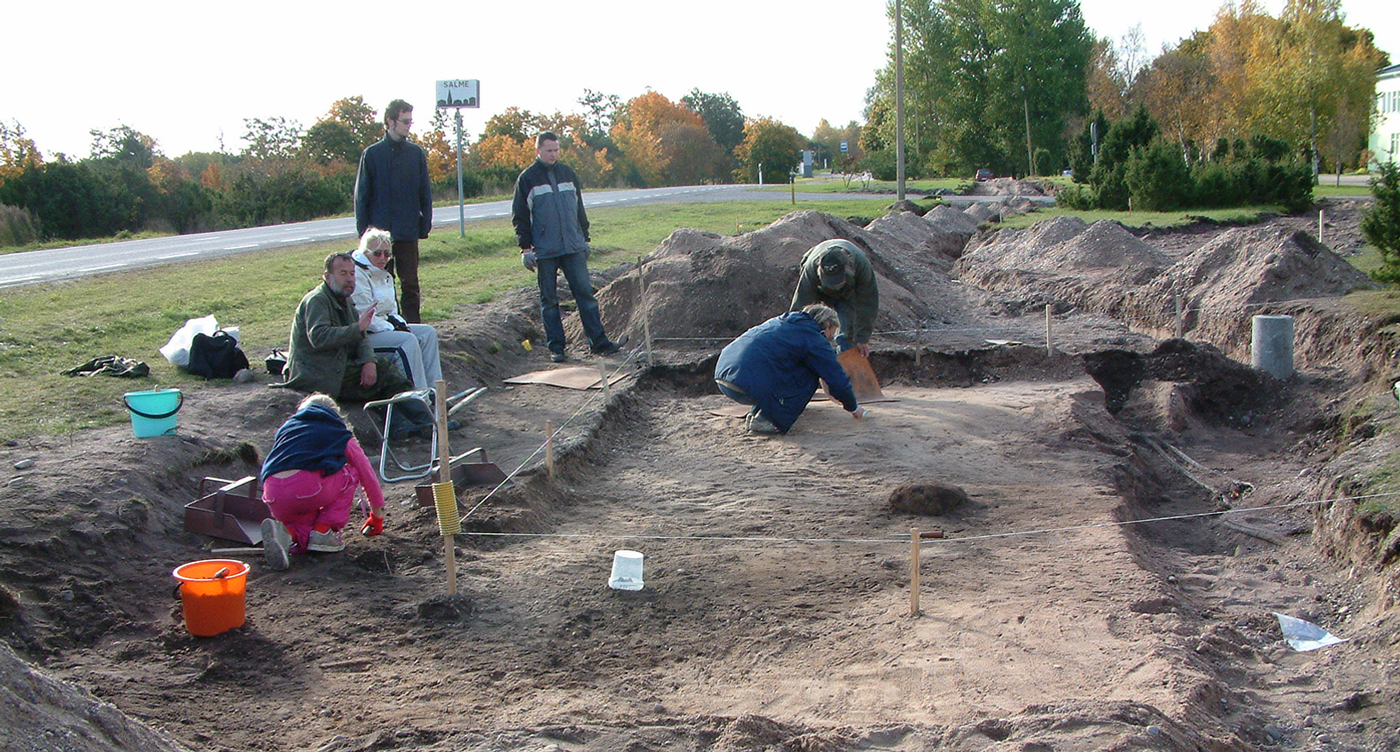The area surrounding Salme used to look completely different during the Pre-Viking Age as the sea-level has since dropped, exposing the seafloor. Back then, Sõrve Peninsula used to be an island separated from Saaremaa by a strait where the Salme River now flows. The grassy meadow behind the schoolhouse in Salme used to be a cove. Sailing through the Salme Strait from the Baltic Sea to the Gulf of Riga saved a lot of time, but it was a risky endeavour, as it was easy to ambush ships in the narrow strait.
The course and weaponry of the battle
Although the exact location of the battle site and the military strength of both forces are unknown, assumptions can be made from grave goods. We know that the Swedish Viking fleet in Salme comprised various types of ships of different lengths. Two of the ships were abandoned at the burial site, meaning there must have been one more to get the survivors out of there. Viking fleets differed in size. In the Late Viking Age during the 11th century there were massive fleets which consisted of the combined forces of multiple chieftains, comprising over a hundred ships. The fleet in Salme was certainly not as big, it was common during the Pre-Viking Age for chieftains to organise smaller raids using their own forces, which usually comprised a couple of ships with a hundred or so warriors.
Based on the items buried in the graves their main weapons were swords and bows. Only a few spears were recovered from the ship graves in Salme, and no battle axes. Shields were a crucial part of defence equipment. Although Vikings are typically depicted wearing helmets and some lavishly decorated ones have been discovered from Swedish ship burials, the graves in Salme didn’t contain any helmets.

Excavation of the first ship in Salme in 2008 // Photo: Saaremaa Museum
The Battle of Salme began with an attack from bowmen. The rain of arrows hit the ships and the men causing the first casualties. Fierce close combat ensued with swords clashing and piercing. Judging from the afflicted wounds, broken bones and skulls and dismemberments, the attackers must have been very strong and experienced in swordsmanship. While the Vikings usually attacked swiftly and unexpectedly, in this situation they themselves were caught in an unexpected attack. Some of the Vikings were struck from their backs, some were attacked by multiple enemies at the same time. Based on the signs of combat on skeletons, it seems that the first tactic was to to maim them from their arm or shoulder to render them unable to fight. Wounded warriors were finished off with a blow to the head.

In addition to spearheads, combs and game pieces were also uncovered from the ships. // Photos: Maanus Masing / Saarte Hääl
Aftermath
It is not known who won the battle nor how many fell. What is certain is that survivors had the opportunity and time to bury their comrades-in-arms with dignity. Most of the weapons found from the ship graves had been deliberately rendered inert by melting or other methods to avoid enemies putting them into use. The blades of swords were chipped, bent or broken in two and shields dented.
The bodies of the dead warriors, along with their belongings, were placed in the ships, which were in turn filled with sand and gravel from the beach. It is possible that in the second ship only the dead were buried in sand. The rest of the ship was left unburied, leaving it exposed to the elements that caused significant deterioration to the ship before the storm waves buried it under a pile of sand.
Author: Marge Konsa